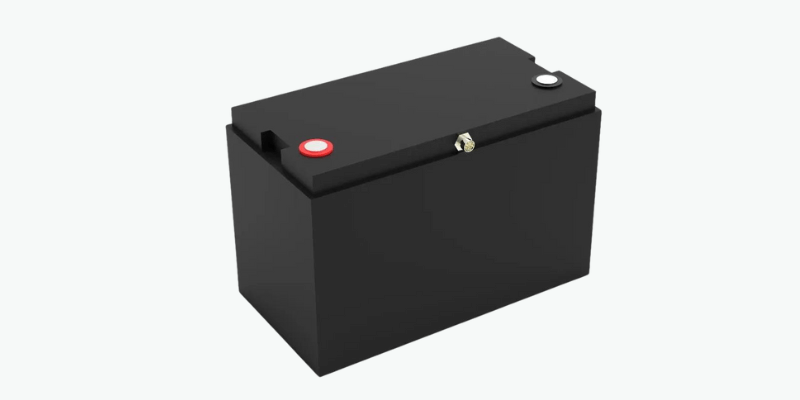Antes de discutir baterías de ciclo profundo, es importante comprender los conceptos básicos de la batería, como ciclos y profundidad de descarga (DOD).
Un ciclo es una descarga completa y una recarga de una batería. El DOD mide la capacidad utilizada durante la descarga, con el 100% del DOD que iguala una descarga completa.
El estado de cargo (SOC) refleja el cargo restante, donde el 100% DOD corresponde al 0% de SOC. Se produce una descarga profunda cuando se usa del 80% al 100% de la capacidad.
¿Qué es una batería de ciclo profundo?
Una batería de ciclo profundo está diseñada para descargas profundas continuas de 80-100% DOD. Las baterías de alta tasa pueden manejar algunos ciclos profundos si se siguen estrictamente las tasas de descarga y de carga, pero el ciclo profundo repetido puede hacer que fallaran con el tiempo. Los fabricantes generalmente recomiendan no descargar por debajo del 45% para extender la vida útil de la batería.
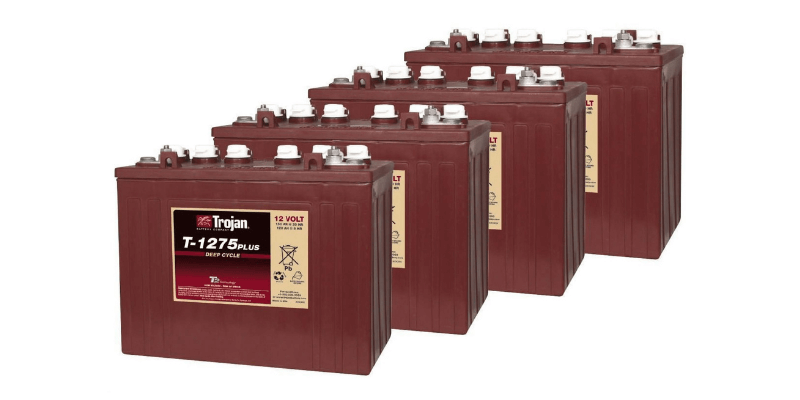
Tipos de batería de ciclo profundo
Hay varios tipos de baterías de ciclo profundo, cada una con materiales, pros y contras distintos.
Ácido de plomo inundado (Fla)
La batería inundada de plomo-ácido, el tipo más antiguo que aún se usa, conocida como celda húmeda con un líquido electrólito. Requiere adiciones de agua frecuentes y debe permanecer en posición vertical debido a la producción de gas hidrógeno. El mantenimiento es alto, que implica la adición de agua y la limpieza de residuos de ácido. Su popularidad ha disminuido debido a las necesidades de peso y mantenimiento.
ACID-ACID REGULADO DE VÁLVULA (VRLA)-baterías de gel y AGM
Estas baterías de ácido de plomo usan electrolitos gelificados o estera de vidrio absorbido, eliminando la necesidad de adiciones de agua. Son más caros que las baterías inundadas, pero a menudo tienen una vida útil más corta en las aplicaciones exigentes. No requieren almacenamiento vertical y reducen los riesgos de corrosión.
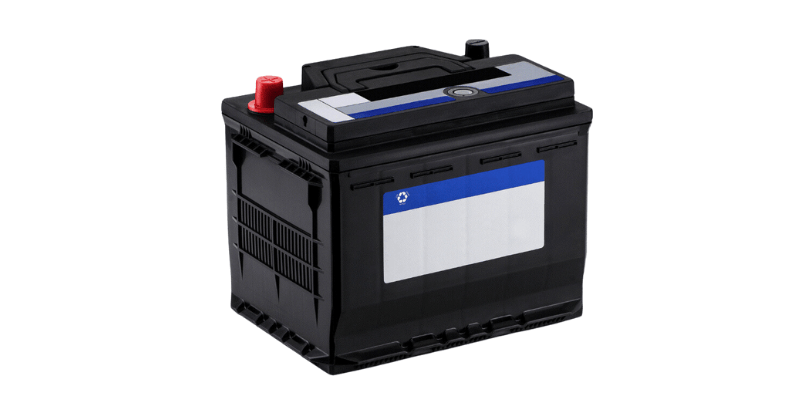
Baterías de iones de litio
Considerado el futuro de las baterías de ciclo profundo, no necesitan mantenimiento, se pueden descargar profundamente sin daños y cargarse rápidamente. Aunque su costo inicial más alto puede disuadir a algunos usuarios, duran las baterías de plomo-ácido a largo plazo y ofrecen numerosas ventajas, como ser liviano y mantener la energía durante los ciclos de descarga.
Aplicaciones de baterías de ciclo profundo
Antes de seleccionar una batería, determine qué debe alimentarse, para cuánto tiempo, con qué frecuencia y la potencia requerida. Las baterías de ciclo profundo son adecuadas para aplicaciones cíclicas donde los usuarios controlan cuándo se usa la batería.
Por ejemplo, un carrito médico lejos de una salida se basa en la alimentación de la batería mientras no se aplica. La enfermera o el médico lo activa diariamente, lo que requiere una potencia constante a largo plazo – Un uso de descarga profunda que requiere una batería de ciclo profundo. Del mismo modo, las baterías de los teléfonos celulares proporcionan energía durante una sola carga y se usan diariamente. Los usuarios generalmente esperan hasta que su teléfono esté completamente descargado antes de recargar (100% DOD/SOC 0%). Esta demanda constante también requiere una batería de ciclo profundo.
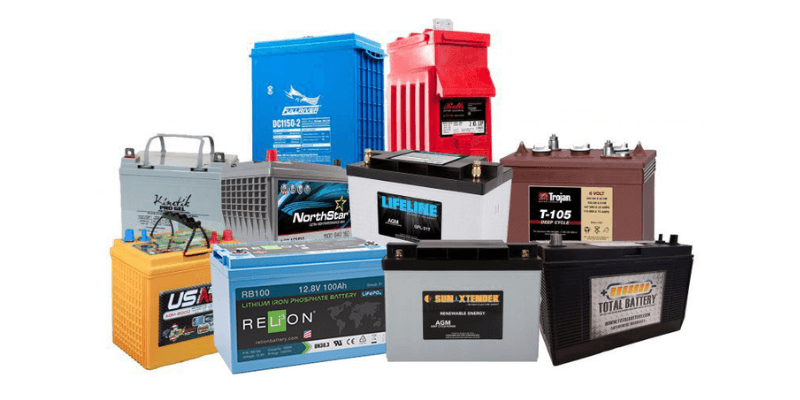
La tecnología de ciclo profundo también se aplica al uso marino, RVS, scooters de movilidad, vehículos eléctricos y sistemas solares.
Por el contrario, las baterías de alta tasa sirven roles de respaldo en emergencias. Por ejemplo, los ascensores usan estas baterías para entregar energía rápidamente durante las fallas de energía, pero pueden necesitar reemplazo antes de su uso. Una batería de alta velocidad actúa como una póliza de seguro para demandas repentinas de energía, mientras que las baterías de ciclo profundo proporcionan un rendimiento cotidiano confiable.
¿Cuánto tiempo durará una batería de ciclo profundo?
La vida útil de una batería de ciclo profundo depende de varios factores, ya que las baterías de plomo-ácido son más propensas a daños que al litio.
El mantenimiento adecuado, la carga correcta y las prácticas de descarga pueden ayudar a extender la vida de una batería. Las baterías de plomo-ácido se ven afectadas negativamente por riego inadecuado, exceso de descarga, sobrecarga y bajo cargo, lo que reduce significativamente su vida útil. Por otro lado, las baterías de litio no requieren riego y no se ven afectadas por el estado de carga parcial o el bajo cargo. Muchas baterías de litio vienen equipadas con un inteligente Sistema de gestión de baterías (BMS) Eso mejora la protección de la batería y la longevidad.
Además, las temperaturas más altas aceleran la degradación de la batería.
En términos de vida útil promedio, las baterías de fosfato de hierro de litio generalmente duran las baterías de plomo-ácido, con más de 2000 ciclos en comparación con 200 ciclos, respectivamente. Las baterías de litio mantienen la capacidad independientemente de la velocidad de descarga, lo que las hace superiores para aplicaciones de ciclismo profundo. Es importante considerar el número de ciclos que una batería puede soportar en lugar de solo tiempo para medir su longevidad con precisión.
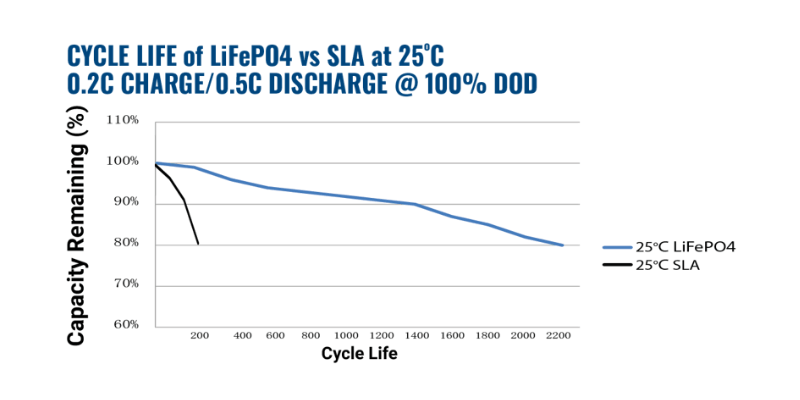
Para aplicaciones de ciclo profundo donde las tasas de descarga exceden 0.1C (¿Qué es una tasa de C?), una batería de litio de menor capacidad a menudo supera a una batería de plomo-ácido equivalente. Para determinar las capacidades de su batería, siempre consulte las especificaciones del fabricante.
¿Qué batería de ciclo profundo tiene más capacidad?
La capacidad varía significativamente entre las baterías de plomo-ácido y litio debido a su diferente química. Las baterías de litio entregan hasta el 100% de su capacidad nominal a cualquier tasa de descarga, mientras que las baterías de plomo-ácido proporcionan una energía menos utilizable a tasas de descarga más altas.
Ambos tipos pierden la capacidad en el clima frío, pero el litio funciona mejor. Por ejemplo, la capacidad de una batería de plomo-ácido disminuye hasta un 50% a 0 ° C, en comparación con una pérdida del 10% para las baterías de fosfato de hierro de litio.
Cómo cargar una batería de ciclo profundo
Para maximizar la vida y el rendimiento de su batería de ciclo profundo, cargamos correctamente. La carga adecuada depende de la química, el voltaje y la capacidad de la batería. Holo Battery ofrece una guía en Cómo cargar una batería de ciclo de litio profundo. Seguir esta guía ayudará a garantizar que su batería dure más.
Baterías de ciclo profundo vs baterías de inicio
Las baterías de ciclo profundo son como corredores de maratón, proporcionando un suministro constante de energía durante largos períodos, ideales para alimentar la electrónica en barcos o RVS. En contraste, las baterías de inicio son como velocistas, descargando alta potencia rápidamente para iniciar motores de vehículos. Las baterías de doble propósito combinan ambas capacidades, ofreciendo ráfagas cortas de potencia y suministro continuo en una sola unidad.

